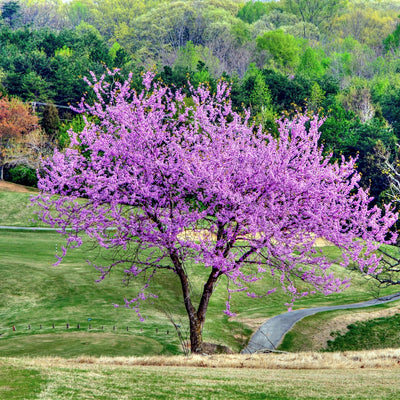Fiddle Leaf Fig A Bold Lush Statement
Large glossy leaves shaped like violins make the fiddle leaf fig (Ficus lyrata) a popular houseplant because they bring immediate elegance and drama to any room. This West African rainforest native plant requires bright yet indirect lighting and warm and humid environments to grow well. Fiddle leaf fig requires delicate attention, but those who successfully meet its demands will find it an extraordinary centerpiece in any room.
How To Maintain A Fiddle Leaf Fig
The fiddle leaf fig seems challenging to grow but becomes simple to care for when you know its particular needs. Maintaining a proper watering schedule is crucial because excessive water leads to root rot, but insufficient water results in leaf drop. The plant requires watering once the top inch of soil has dried out to ensure proper drainage. The plant's leaves remain lush and vibrant with adequate humidity levels while misting sometimes or using a humidifier helps recreate its natural habitat. Regular cleaning of the plant’s broad leaves removes dust that blocks sunlight absorption to ensure healthy growth.
The fiddle leaf fig needs consistent environmental conditions because it reacts poorly to sudden temperature shifts or air drafts. The best spot for the plant is near a bright window but not near air conditioning vents or radiators. Rotating your plant regularly will ensure balanced growth while stopping it from bending toward the light source. The wild fiddle leaf fig tree can grow as tall as 50 feet, but indoor versions usually reach six to ten feet in height. You can benefit from strategic pruning to achieve a bushier plant with a compact shape.
Growing Fiddle Leaf Figs presents a mixture of aesthetic rewards
The standout feature of the fiddle leaf fig is its remarkable foliage, which makes it visually striking. The plant's big, shiny leaves make it an exceptional feature in any space because they create a vibrant tropical look that suits contemporary and minimalistic interior designs. The stunning appearance of these plants demands maintenance efforts, which beginners may find intimidating. Fiddle-leaf fig plants react dramatically to minor environmental changes because they are known to be temperamental. When leaves are yellow or fall off, they indicate possible problems from too much water to inadequate lighting, which makes monitoring its requirements essential.
Good lighting is vital for the fiddle leaf fig. The fiddle leaf fig thrives in bright indirect light but can withstand direct sunlight for short periods in the morning. Insufficient light exposure causes plants to stretch with sparse leaf development, while direct sunlight exposure above acceptable levels burns the leaves. A grow light can provide illumination when natural light falls short to maintain consistent plant growth.
Fertilization is essential for keeping fiddle leaf figs healthy. A Water-soluble fertilizer throughout spring and summer ensures healthy foliage growth and robust root development. In the fall and winter, plants grow slower, which means fertilization needs to be decreased to avoid placing unnecessary stress on them.
Repotting fiddle leaf fig plants presents a notable challenge for their caretakers. These plants react negatively to disturbances and experience transplant shock when improperly handled. Repotting might be necessary if roots emerge through the drainage holes or the plant exhibits signs of distress, as receiving care. Selecting a pot that offers minimal extra space beyond the current one reduces moisture buildup, which leads to root rot. A substrate composed of potting soil mixed with perlite and orchid bark offers the essential aeration that supports proper root growth.
Discover native plant options that pair well with fiddle leaf figs
The fiddle-leaf fig tree originated outside of North America, yet pairing it with native plants produces a flourishing garden both indoors and outdoors. Native plants thrive in their surroundings because they require minimal upkeep and play a crucial role in supporting local ecosystems. Pairing native plants with tropical houseplants, such as the fiddle-leaf fig, will enhance diversity while promoting sustainability in any green space.
The Eastern Redbud (Cercis canadensis) is a beautiful native North American plant option for indoor jungles. Small potted versions of this normally outdoor tree can flourish inside as long as they receive proper maintenance, and their delicate leaves create an appealing contrast with the strong appearance of the fiddle-leaf fig. The American Holly (Ilex opaca) maintains its green foliage throughout the year and makes a compact indoor shrub that enhances holiday décor during winter.
Southern Magnolia (Magnolia grandiflora) enhances outdoor landscapes alongside fiddle-leaf figs through its glossy foliage and aromatic white blooms. Magnolias reach full tree size, but their dwarf forms fit well into small landscape areas. The broad heart-shaped leaves of Wild Ginger (Asarum canadense) combine nicely with the fiddle-leaf fig's lush foliage in shaded garden areas.
Gardeners prioritizing pollinator-friendly native plants can rely on Black-Eyed Susan (Rudbeckia hirta) and Bee Balm (Monarda didyma) to add vibrant color and attract bees and butterflies to their spaces. Fiddle-leaf fig trees do not support pollinator habitats, but the addition of nearby native species generates a garden that supports biodiversity and environmental wellness.
Combining tropical plants and native species creates an aesthetically pleasing garden space that supports ecological balance. Plant aficionados who learn about the fiddle leaf fig's requirements and combine it with durable native plants can experience the dual benefit of having a striking indoor plant alongside natural local flora.

